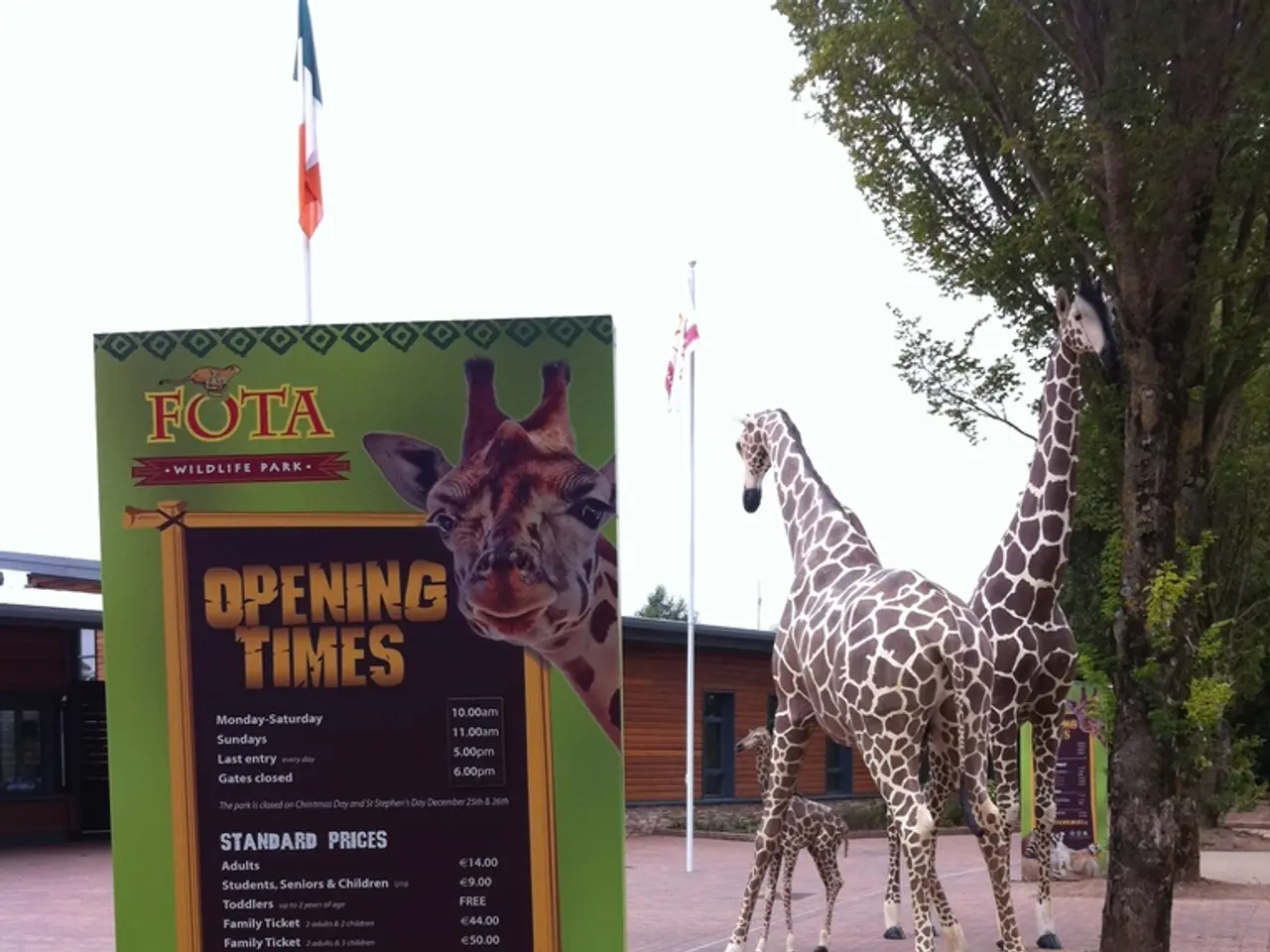Zoological Park of Ekaterinburg Celebrates 95th Anniversary: Exploring the Functionality of Animal Habitats
The Ural Zoo, one of Russia's most esteemed wildlife sanctuaries, is gearing up for a grand celebration to mark its 95th anniversary. From September 16 to 21, visitors can expect a series of exciting events, educational activities, and engaging experiences.
Founded by the Club of Young Biologists (KUBZ) in 1925, the Ural Zoo has grown into a significant institution, housing some of the most fascinating creatures from around the globe. It is one of the five zoos in Russia that keep elephants, one of the 19 that keep polar bears, and one of the 35 that keep Amur tigers.
The zoo is home to an Indian elephant named Dasha, who has resided there for 17 years, and seven pink flamingos named Flamenco, Frant, Freddie, Phil, Freya, Fairy, and Fiona. The zoo also houses a unique resident, a dwarf hippo named Eva, who is said to be the zoo's ghost.
In preparation for the anniversary celebrations, a new complex for brown bears is being opened in anticipation of new arrivals. The zoo's animal collection also includes a diverse array of amphibians, such as the sacred tree frog, red-spotted tree frog, and the agile frog.
The zoo's infrastructure is impressive, boasting an artesian water well, animal kitchen, central heating, water drainage systems, a garage, visitor cafe, modern restrooms, infrastructure for people with disabilities, and is equipped with sound notification, automatic fire alarm system, WI-FI, information stands, and navigation elements.
The maintenance of white bears, which require 2 million rubles a year for food alone, is funded by the patron - PАO NK "Rosneft". Many animals in the zoo are under the patronage of large companies, deputies, and ordinary people.
The zoo follows a "95 Good Deeds" plan, focusing on improving infrastructure, hosting events, and educational activities. On September 17, a congress of the Union of Zoos and Aquariums of Russia (94 organizations) and a "Round Table" discussion on nature conservation programs will take place.
On September 19, an international scientific and practical conference "Zoo in a big city. Experience of work" will occur, with representatives from Russian and international zoos and aquariums attending. A festive program "The Best Day with Family" is planned for September 20-21, featuring new books about the zoo's activities.
As the zoo looks towards the future, experts recommend preserving it as a memorial in its current location and considering the possibility of building a second phase for hoofed animals and representatives of local fauna. With its growing popularity and commitment to conservation, the Ural Zoo continues to be a beacon of wildlife preservation and education in Russia.
The Ural Zoo, in addition to its upcoming 95th anniversary celebrations focusing on exciting events and educational activities, is also planning to broaden its offerings to cover areas such as home-and-garden, lifestyle, education-and-self-development, and learning. Visitors might find programs that include horticulture workshops, home improvement advice, personal development seminars, and learning sessions about the zoo's various species and conservation efforts.
In line with its commitment to educational outreach, the Ural Zoo is also considering the creation of a specialized education center, where visitors can partake in interactive learning experiences designed to enrich their understanding of wildlife, nature, and conservation measures. This center would cater to people of all ages, fostering a lifelong appreciation for the natural world and promoting sustainable living practices.




